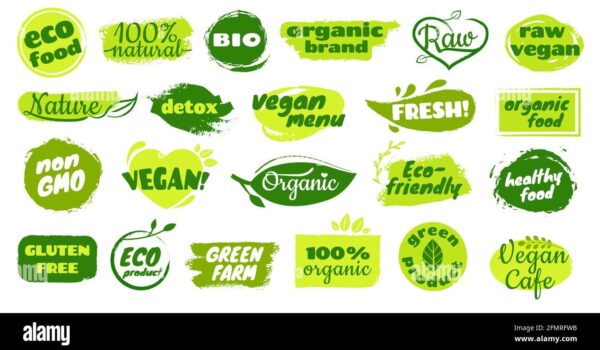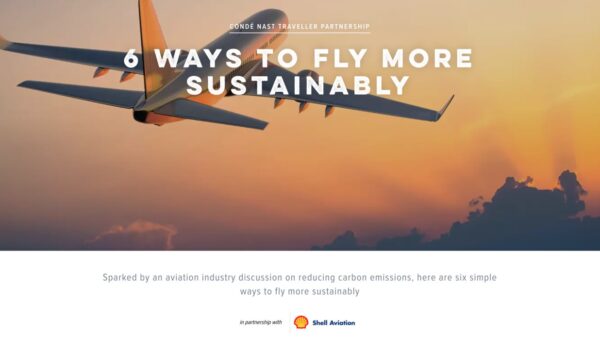© Good Travel Guide, November 2021 by Daniela Miranda
A couple of years ago, I eagerly booked what seemed to be an eco-hotel, for a relaxing responsible stay in my home country. Before going there, I saw the pictures and thought of this place as pristine, with luscious nature around and mindful of their local environment. What I found instead, was indeed, an eye-opener. The hotel called itself an eco-hotel because it had nature around but nothing else, trash was not separated and it was hidden from the guests, single-use plastics were still used, and when speaking to staff no one was really keen into explaining what the hotel did in terms of sustainability and their impact to the local environment. I left with a feeling of disappointment, thinking I had fallen on a ‘green’ spell: I thought that the hotel was sustainable just because of the way it branded itself. Nowadays, this is known as the greenwashing trap, and it’s becoming increasingly common in the marketing world. After my hotel experience, I started noticing ‘green’ products everywhere: at the supermarket, advertised on the tv, almost all brands had something green or made a green claim, even my laundry detergent. Words like ‘Natural’, ‘green’, ‘responsible’, ‘local’, the messages were pretty much the same, this left me wondering: Which of these claims were real and which were only created to appeal to people like you and me.
The greenwashing trap?
Widely known nowadays, greenwashing can be defined as ‘a form of marketing spin in which green PR and green marketing are deceptively used to persuade the public that an organisation’s products, aims and policies are environmentally friendly’. (Source: Creatives for Climate). The problem with greenwashing is an ethical one, since it misleads consumers about a company’s environmental performance for business gains (Delmas & Cuerel Burbano, 2011). Greenwashing is in direct detriment to the environmental cause, since it only hides the fact that an organisation is not actually working on becoming more sustainable, as well as impeding consumers from seeing the reality.
Over the last few years, consumers have become increasingly conscious and caring about sustainable purchases in their decision making and the impact these have on a larger scale, and Marketing Managers know this. Green marketing gives a certain aura to a brand which will attract a more conscious consumer. Adjectives such as ‘green’ ‘good’ ‘fair-trade’ ‘responsible’ have been widely used in order to portray a positive image.
However, there is little to no regulation on marketing, especially in certain sectors such as tourism, in order to forbid brands and organisations from using misleading content, varying from messages (such as claims, naming, wordings) to visual content (green colors, use of heavily photoshopped images).
Greenwashing can be done accidentally (when an organisation tries to hyperbolize what they are already doing, or putting bigger words than efforts), but in other cases can be done on purpose (Remember the Volkswagen greenwashing scandal, where they installed and developed a defeat software for their engines, in order to cheat in dioxide emissions tests in the US.). Some brands even go to the lengths of designing and creating their own certifications, back-up studies and eco-labels. Even though ecolabels are heavily regulated, there is no impediment for an organisation to create a green stamp which will look to the eyes of the consumer as a real label (See image below). This type of visual communication, makes those consumers ultimately lose their trust in brands and in labels altogether, as well as can dramatically change their opinion about an organisation, especially if they feel they have been misled or lied upon.

Image Source: Alamy
Greenwashing and the tourism industry?
In terms of tourism, sustainability is a complex subject, since a destination is composed of several stakeholders: private and public sector. Adding to this complexity, destination sustainability is often planned and executed at a macro level (policies and regulations), but we as travellers experience the micro level only (local businesses and local attractions), and, since perceptions of sustainability are not the same for everyone, finding that your hotel is still giving plastic shampoo bottles and selling bottled water might not be such a big deal for someone, for others might be a deal breaker.
Another issue is that there is something quite contradictory about travelling and sustainability, especially when considering long-distance travelling. Unfortunately, choosing an eco-resort on the other side of the world would produce a higher carbon emission than choosing to holiday in your own country. In terms of the tourism industry, some clear examples of greenwashing can be found, especially when it comes to air travel, for example, a campaign ad for RyanAir (Image below), was banned by the ASA (Advertising Standard Agency) since the company was found to be making false claims about being the lowest emission airline in Europe. Another example, this headline for an article sponsored by Shell, about reducing your carbon emissions while traveling by air: while they indeed give some tips to people that take a long flight, it doesn’t address the main issue and diverts attention from the actual problem.

Image Source: Twitter Agnes Uba https://twitter.com/agnes_uba/status/1182563884026224640

Image Source: ResetTravel, Greenwashing in the travel industry.
In terms of tourism marketing, destinations are more and more interested in attracting responsible and respectful travellers, which are more likely to be travellers that are interested in making more responsible choices. However, it seems this is sometimes limited to the use of a certain wording, rather than making real efforts in terms of sustainability.
“Suddenly, it seems that every hotel, tour operator and even airline is bending over backwards to do its bit for the planet. Adverts and websites are full of claims about the good that choosing a particular holiday will do for the environment and local communities. And amid such a profusion of green claims, it’s becoming increasingly hard to tell who is genuinely concerned about the planet and who is just cashing in on our eco-guilt.” Source: Tom Robbins, The Guardian
So how can you spot greenwashing?
We asked our followers and people from our team what were the main common signs of Greenwashing, and this is what they said:
1. “Unconventional logos in ‘Green’ colours” @shuttleberg
Not because a product or service includes green and brown colours, does it mean that is actually sustainable. Deceptive packaging and ads often showcase icons such as leaves, trees, water drops; these symbols have been widely used since they unconsciously convey the idea of a green product without actually stating that the product in question is sustainable. Also, be mindful that brands often used heavily photoshopped images in order to appeal to the eye.
2. “When they say ‘save the world by buying this product’ @florentlenoir
Indeed, overt and overly vague expressions such as ‘save the world’ ‘reduce your carbon footprint’ ‘eco-friendly ‘ ‘natural’ are quite easily identifiable. However, marketing teams make sure this isn’t immediately obvious. They use cognitive biases that can lead us to buy an item or service just because it looks greener than their competitors.
3. “When only one small part of the product line is green and the rest is not” @monamendis
This is also a sign to beware when evaluating a product or a service, since sustainability should not only be addressed into one product or action, it should be able to be translated to every department of the organisation, no matter the size.
4. “Self-given certifications” – @inesvantol
As I mentioned before, don’t forget to be mindful of labels, since quite a lot of companies create their own or include graphics that look like ecolabels. Therefore, it is important that you do your own research before. In terms of products, you can easily identify greenwashing with the list of ingredients, but in tourism this proves to be a little more difficult. In order to see if a destination or tourism business is indeed making efforts to improve their sustainability, look for those with well-established labels. Some of the well-known labels in tourism are those accredited by the GSTC (Global Sustainable Tourism Council), for example, the GSTC-Recognised Green Destinations Standard for destinations. Achieving the GSTC-Recognised and GSTC-Accredited status means that a Certification Body (CB) awards certification according to processes that comply with international standards and good practices. Progress is monitored through indicators, which makes sustainable development in tourism concrete, objective and demonstrable.
5. “Check everything! The sources, (references), methodology… for claims that are made” – @louisedhg
Also, companies that make sustainability claims should be expected to show a transparent overview of all important aspects of sustainability: environmentally-friendly management, social responsibility, health & safety for customers and staff, climate adaptation, avoiding waste, saving energy amongst other. For example, this is exactly what Green Destinations bv aims to offer with the Good Travel Seal certification for businesses in tourism. The result of the audit is then summarised in a scorecard (see image below) which is published in the Good Travel Guide website – and only when certified, the business can then show it to its clients. You can learn more about the Good Travel Seal here


Finally, as with all products and services, the best you can do is to consume smarter, you can start by making more conscious decisions based on your own research, in order to avoid falling into the Greenwashing trap.
What did you think of this article? Do you have any other tips on how to spot greenwashing? Let us know on our Instagram and Facebook.
Want some more useful content and readings about this subject? Here a few selected for you
Greenwashing in Sustainable Tourism & Responsible Travel https://www.earth-changers.com/blog/2018/9/25/greenwashing-in-sustainable-tourism-amp-responsible-travel
The Brutally Honest Sustainable Tourism Video https://www.youtube.com/watch?v=yW32VXRTqF4
Are you being greenwashed? https://www.theguardian.com/travel/2008/jul/06/green.ethicalholidays
Guide against Greenwashing https://www.youtube.com/watch?v=5AUDasE1h1k&ab_channel=TEDxTalks
How Can I Spot Greenwashing in The Travel Industry? https://www.resettravel.co.uk/journal/2020/9/25/how-can-i-spot-greenwashing-in-the-travel-industry




